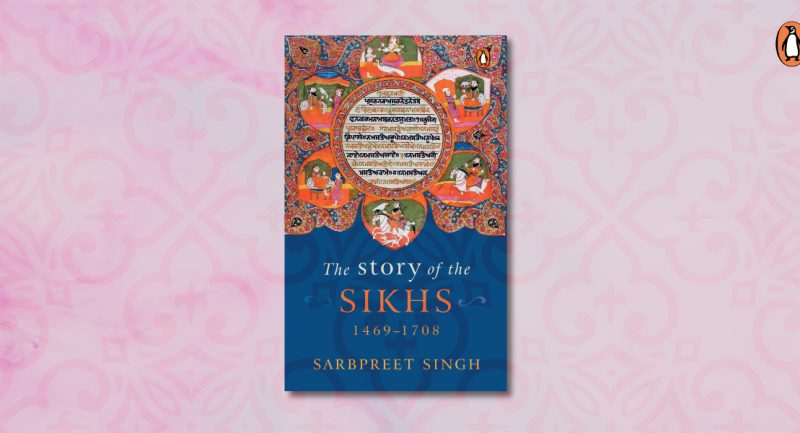
What lies beyond the headlines of air combat, rescue missions, and daring operations? Air Warriors takes you into the heart of the Indian Air Force, weaving together stories of courage, sacrifice, and camaraderie that have remained largely unknown.
Read the excerpt to know more.

Air Warriors
Arijit Ghosh
As he so often liked to do, nineteen-year-old Lieutenant Indra Lal Roy climbed into the wooden cockpit of his beloved square-nosed, single-seat SE 5a biplane (tail No. B180), and took off alone. It was early one July morning in 1918 with World War I still raging, as he flew over the battle-scarred trenches of France. The nose-mounted machine gun could fire through the propeller and there was a spare drum of ammunition mounted inside his cockpit. Soaring over the German-occupied French town of Carvin with the morning air smooth and still, this was his favourite time to fly. And hunt . . .
Fondly called ‘Laddie’ by his Squadron mates of 40 Squadron ‘A’ Flight, his boyish good looks belied his enviable reputation as an ace fighter pilot who had shot down ten enemy aircraft (two shared). Five of these were destroyed (one shared), and five ‘down out of control’ (one shared), in a little over 170 hours of flying time, in the space of just thirteen days.
Like many Air Aces of World War I, he loved to hunt alone, savouring the freedom of those solo forays in the war-torn skies over enemy lines that allowed for exceptional acts of individual bravery and courage. He trusted and leveraged to maximum effect his combat skills in dogfights with multiple German aircraft, including the mainstream Pfalz D.III and Fokker D.VII fighters that made up the backbone of their Air Force. Twice, he had shot down two enemy aircraft in a single combat sortie, and three on the same day once. As his score mounted and his reputation spread, he was feared and respected alike by his opponents.
This was his second tour of duty in France with the RFC, the Royal Flying Corps, that subsequently became the RAF, the Royal Air Force.
After his commissioning as a Second Lieutenant on 5 July 1917, he had been shot down and badly injured in December on his very first operational sortie with 56 Squadron, also equipped with SE 5a. So bad were his injuries that he had been given up for dead and put in a French mortuary, where he woke up subsequently and managed to get out by banging loudly on the door. The terrified morgue staff called him the ‘Boy from the Dead’.
He spent the next six months recuperating in a hospital during which time he made some beautiful sketches of military aircraft, some of which survive to this day, more than a 100 years later.
He returned to active duty in a ground job as an Equipment Officer. Lesser mortals would have been happy with that, but the fire of adventure and wartime fighter flying still burnt brightly in the nineteen-year-old, and he volunteered for, and soon cleared his medical exam for rejoining operational flying duties with in June 1918. Laddie was soon back where he belonged, in the cockpit of his favourite S.E.5a fighter. And the rest, as they say, is history.
It seemed as if he were a man in a hurry to make up for lost time, as he shot down one enemy aircraft after other, starting with a Hannover C on 6 July. This was followed by three victories in the space of four hours on 8 July (two Hannover Cs and a Fokker D.VII); two on 13 July (a Hannover C and a Pfalz D.III); two on 15 July (two Fokker D.VIIs); and one on 18 July (a DFW C.V). His tenth and final victory came on l9 July when he shot down a Hannover C over Cagnicourt.
On 22 July 1918, a 106 years ago, Laddie Roy had taken off in search of his eleventh victim. Still little more than a young boy, one month shy of his twentieth birthday, he had been attending St Paul’s school in Kensington, London, just a year ago. Now he was firmly established as one of the top allied air aces of the Great War, the War that was supposed to end all wars.
Everyone knows how hollow that claim turned out to be.
That fateful day, on 22 July 1918, as he patrolled the skies, alone in his S.E 5a fighter, high over enemy lines, did he at some point, have a premonition, a sense of foreboding like the Irish Airman in the famous W.B. Yeats war poem, and like him, feel, ‘I know I shall meet my fate/ Somewhere among the clouds above /A lonely impulse of delight/ Drove to this tumult in the clouds’, as he ran into a bunch of Fokker D VIIs of Jasta 29 (or 29 Fighter Squadron), of the Imperial German Air Service, as the Luftwaffe was called then.
***
Get your copy of Air Warriors by Arijit Ghosh on Amazon or wherever books are sold.









